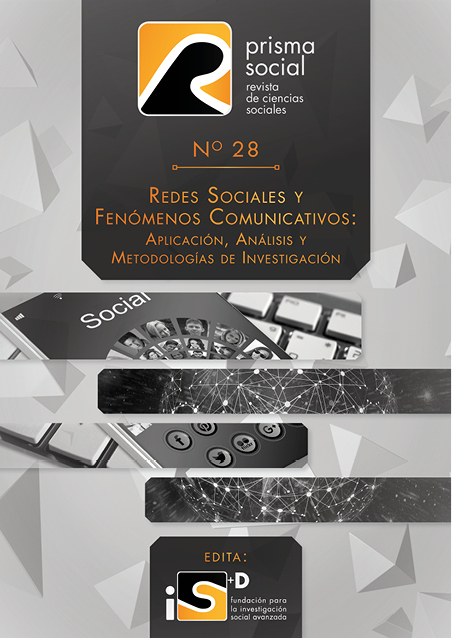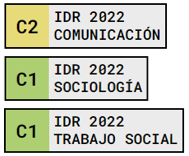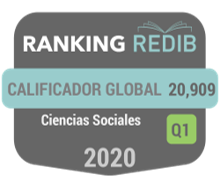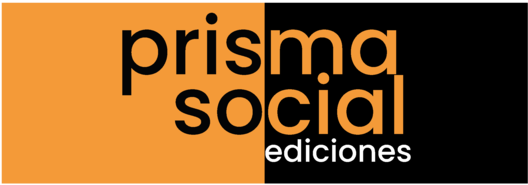Medición del Brand Equity con Social Media
Palabras clave:
brand equity, marcas, medición, social mediaResumen
El propósito de este trabajo es sugerir un modelo de brand equity basado en el consumidor que tenga en cuenta las nuevas formas de interacción entre marcas y consumidores en las redes sociales, además de proponer una escala de medición simple, válida y económica, y evaluar si y cómo se perciben las marcas de manera diferente cuando los consumidores están expuestos (o no) a su participación en Facebook.
La escala se aplicó a 361 consumidores que siguen una marca específica en Facebook y a consumidores que no lo hacen, para compreender si se pueden encontrar diferencias en el brand equity. Se consideraron tres grupos de consumidores y se compararon sus reacciones a la misma marca: consumidores que siguen la marca en Facebook; consumidores que no siguen la marca en Facebook, aunque son usuarios de Facebook; y los consumidores que no usan Facebook.
Los hallazgos sugieren que para los seguidores de la marca en Facebook, la marca tuvo mejores resultados en la imagen de marca, lealtad a la marca y relación de marca que para los otros dos grupos. Para las mismas variables (imagen de marca, lealtad a la marca y relación de marca) no se ha encontrado una diferencia estadísticamente significativa entre las personas que no siguen la marca en Facebook, ya sea porque no usen Facebook o porque no siguen la marca en el Facebook.
Descargas
Citas
Aaker & Joachimsthaler (2000), Brand Leadership. London: Free Press.
Aaker, D.A. (1996), Building Strong Brands. Free Press, New York, NY.
Aaker, David A. (1991), Managing Brand Equity. New York: The Free Press.
Ambler, T. (1995), Building brand relationships. Financial Times Mastering Management Series, No. 6, pp. 8-11.
Ashley, C. & Tuten, T. (2015). Creative strategies in social media marketing: An exploratory study of branded social content and consumer engagement. Psychology & Marketing, 32(1), 15–27
Assael, Henry (1992), Consumer behavior and marketing action. Boston, MA: PWS-KENT Publishing Company.
Barreto, A.M. (2014), The word-of-mouth phenomenon in the social media era, International Journal of Market Research, Vol. 56 No. 5, pp. 631-654.ISO 690.
Berry, Leonard (2000), Cultivating Service Brand Equity. Journal of the Academy of Marketing Science 28(1), pp.128-137.
Borle, S., Dholakia, U., Singh, S. & Durham, E. (2012). An empirical investigation of the impact of Facebook fan page participation on customer behavior, Marketing Science, 1-36.
Bovee, C.L., Thill, J.V., Dovel, G.P. & Wood, M.B. (1995), Advertising Excellence McGraw-Hill, New York, NY.
Brown, J. D. (2002), The Cronbach Alpha Reliability Estimate. Shiken: JALT Testing & Evaluation Sig Newsletter, ISSN 1881-5537, v. 6, n. 1, p. 12-15, Feb.
Bruhn, M., Schoenmueller, V. & Schäfer, D. B. (2012). Are social media replacing traditional media in terms of brand equity creation?. Management Research Review, 35(9), 770-790.
Brunner, T. A., Stocklin, M. & Opwis, K. (2008), Satisfaction, Image, and Loyalty: New versus Experience Customers. European Journal of Marketing, 42 (9/10): 1095-1105.
Chu, S.C. & Kim, Y. (2011), Determinants of consumer engagement in electronic word-of-mouth (eWOM) in social networking sites, International Journal of Advertising, Vol. 30 No. 1, pp. 47-75.
Cronin, J. J. Jr. & Taylor, S. A. (1992), Measuring Service Quality: A reexamination and extension. Journal of Marketing, 56.
Damasio, Antonio (1994), Descartes' Error, Avon Books, New York.
De Chernatony, Leslie & Riley, Francesca Dall'Olmo (1999), Experts' views about defining services brands and the principles of services branding. Journal of Business Research 46.2: 181-192.
Dichter, E. (1985), What's in an Image. Journal of Consumer Marketing, 2 (1, Winter): 75-81.
DreamGrow (2018), “Top 15 most popular social networking sites and apps”, available at: www.dreamgrow.com/top-15-most-popular-social-networking-sites/
eMarketer (2018), “Social networks’ video ad revenues balloon”, available at: www.emarketer.com/content/us-social-video-ad-spending-will-reach-11-69-billion-by-2020
Engel, Blackwell & Miniard, (1995), Consumer Behavior. The Dryden Press, Harcourt Brace College Publishers.
Engel, J. F., Kollat, D. & Blackwell, R. D. (1982), Consumer behavior. New York: Dryden Press. In Anderson, Rolph E., & Srini S. Srinivasan. "E‐satisfaction and e‐loyalty: A contingency framework." Psychology & Marketing 20.2 (2003): 123-138.
Erdoğmuş, İ. E. & Cicek, M. (2012). The impact of social media marketing on brand loyalty. Procedia-Social and Behavioral Sciences, 58, 1353-1360.
Erkan, I., Gokerik, M. & Acikgoz, F. (2019). The Impacts of Facebook Ads on Brand Image, Brand Awareness, and Brand Equity. In Handbook of Research on Entrepreneurship and Marketing for Global Reach in the Digital Economy (pp. 442-462). IGI Global.
Estrella-Ramón, A., García-de-Frutos, N., Ortega-Egea, J. M. & Segovia-López, C. (2019). How does marketers’ and users’ content on corporate facebook fan pages influence brand equity?. Electronic Commerce Research and Applications, 100867.
Fournier, Susan (1998), Consumers and their brands: developing relationship theory in consumer research. Journal of consumer research 24.4: 343-353.
Freitas et al. (1998b), The Design Process of a Cross-Cultural Exploratory Quantitative - Qualitative Survey Research Project to Study the Decision-Making Process. Association for Information Systems Americas Conference 1998. Technology Research in Progress, v.14, n.16, p.944-946, Aug.
FREITAS, H. M., Zanela, A. C., Macadar, M. A., BECKER, J., MOSCAROLA, J. & Jenkins, M. (1998a), Quanti-Qualitative Instruments to Study the Decision-Making Process. WP ISRC No. 020298, Merrick School of Business, University of Baltimore, MD, EUA, Feb., p.29.
González, F. J. M., Lacoba, S. R., Mera, A. C. & Loureiro, S. M. C. (2015). Determinantes de la intención de uso de Facebook en el proceso de decisión de compra. Investigaciones europeas de dirección y economía de la empresa, 21(1), 26-34.
Grönroos, Christian (1994), From Marketing Mix to Relationship Marketing: Towards a Paradigm Shift in Marketing, Management Decision, Vol. 32 Iss: 2, pp.4 – 20.
Jones, T. & Sasser, E. W. (1995), Why Satisfied Customers Defect. Harvard Business Review.
Keating, B., Rugimbana, R. & Quazi, A. (2003), Differentiating Between Service Quality and Relationship Quality in Cyberspace. Managing Service Quality, 13(3).
Keller, K, L, (1993), Conceptualizing, measuring, and managing customer-based brand equity. Marketing 57 (January) 1-22.
Klink, Richard R. & Smith, Daniel C. (2001), Threats to the external validity of brand extension research. Journal of Marketing Research: 326-335.
Knox, S. D. & Denison, T. J. (2000), Store Loyalty: Its Impact on Retail Revenue. An Empirical Study of Purchasing Behaviour in the UK. Journal of Retailing and Consumer Services, 7(1).
Konecnik, Maja & Gartner, William C. (2007), Customer-based brand equity for a destination. Annals of Tourism Research 34.2: 400-421.
Korchia, M. (1999), A New Typology of Brand Image, European Advances in Consumer Research, 4, 147-154
Lai, F., Griffin, M. & Babin, B. J. (2008), How Quality, Value, Image, and Satisfaction Create Loyalty at a Chinese Telecom. Journal of Business Research, 62 (10): 980-86.
Lemon, Katherine N, Rust, Roland T, Zeithaml & Valarie A (2001), What drives customer equity. Marketing Management. Chicago: Spring. Vol. 10, Iss. 1.
Lynch, J., Ariely, D. (2000), Wine Online: Search Costs Affect Competition on Price Quality and Distribution. Marketing Science, 19(1).
McCarthy, Michael S., Heath, Timothy B. & Milberg, Sandra J. (2001), New Brands Versus Brand Extensions, Attitudes Versus Choice: Experimental Evidence for Theory and Practice. Marketing Letters 12 (1): 75-90.
Mitchell, Andrew A. & Olson, Jerry C. (1981), Are product attribute beliefs the only mediator of advertising effects on brand attitude? Journal of Marketing Research. 18(August), 318-332.
Moutinho, L. & Santos J.P. (2009), Neuroscience in Marketing: Empirical Evidence of Social and Emotional Meanings Conveyed by Brands. Presentation at the 5th Thought Leaders International Conference on Brand Management, Athens. MSI (2008), Research Priorities: Guide to MSI Research Programs and Procedures, Marketing Science Institute, MA, available at: www.msi.org/pdf/MSI_RP08-10.pdf (accessed 2 October 2008).
Newman, J. W., Werbel, R. A. (1973), Multivariate Analysis of Brand Loyalty for Major Household Appliances. Journal of Marketing Research, 10.
Newman, J.W. (1957), New Insight, New Progress, for Marketing. Harvard Business Review, November-December: 95-102.
Oliver, Richard L. (1999), Whence consumer loyalty? Journal of Marketing: 33-44.
Peters, K., Chen, Y., Kaplan, A.M., Ognibeni, B. & Pauwels, K. (2012). Social media metrics – A framework and guidelines for managing social media. Journal of Interactive Marketing, 27(4), 281–298.
Prasad, Keshav & Dev, C. S. (2000), Managing hotel brand equity: a customer-centric framework for assessing performance. Cornell Hotel and Restaurant Administration Quarterly 41.3: 22-31.
Quartz, S. & Asp, A. (2005), Brain Branding: Brands on the Brain. ESOMAR Annual Congress, Cannes.
Roselius, Ted. (1971), Consumer rankings of risk reduction methods. The Journal of Marketing: 56-61.
Santos, J. R. A. (1999), Alfa de Cronbach: Uma ferramenta para avaliar a confiabilidade das escalas. Journal of Extension. ISSN 1077-5315, EUA, v.37, n.2, Apr.
Schulze, C., Schöler, L., & Skiera, B. (2015). Customizing social media marketing. MIT Sloan Management Review, 56(2), 8–10.
Smith, A. N., Fischer, E. & Yongjian, C. (2012). How does brand-related user-generated content differ across YouTube, Facebook, and Twitter? Journal of Interactive Marketing, 26(2), 102-113.
Srinivasan, V., Park, Chan Su & Chang, Dae Ryun (2005), An approach to the measurement, analysis, and prediction of brand equity and its sources. Management Science 51.9: 1433-1448.
Straub, D. W. (1989), Validating Instrument in MIS Research. MIS Quarterly, University of Minnesota, v.13, n.2, p.147-169, Jun.
Triantafillidou, A. & Siomkos, G. (2018). The impact of Facebook experience on consumers’ behavioral Brand engagement. Journal of Research in Interactive Marketing, 12(2), 164-192.
van Doorn, J., Lemon, K.N., Mittal, V., Nass, S., Doreen, P., Pirner, P. & Verhoef, P.C. (2010), Customer engagement behavior: theoretical foundations and research directions, Journal of Service Research, Vol. 13 No. 3, pp. 252-266.
Waddell, H. (1995), Getting a Straight Answer. Marketing Research, 7.
Woodside, A. G., Frey, L. L. & Daly, R. T. (1989), Linking service quality, customer satisfaction, and behavioral intention. Journal of Health Care Marketing, 9.
Yi, Y., La, S. (2004), What influences the relationship between customer satisfaction and repurchase intention? Investigating the effects of adjusted expectations and customer loyalty. Psychology & Marketing, 21(5).
Yoon, Gutchess, Feinberg & Polk (2006), A Functional Magnetic Resonance Imaging Study of Neural Dissociations between Brand and Person Judgments. Journal of Consumer Research, vol 33.
Descargas
Publicado
Cómo citar
Número
Sección
Licencia
Los autores/as que publiquen en esta revista aceptan las siguientes condiciones:
- Los autores/as conservan los derechos de autor.
- Los autores/as ceden a la revista el derecho de la primera publicación. La revista también posee los derechos de edición.
- Todos los contenidos publicados se regulan mediante una Licencia Atribución/Reconocimiento-SinDerivados 4.0 Internacional. Acceda a la versión informativa y texto legal de la licencia. En virtud de ello, se permite a terceros utilizar lo publicado siempre que mencionen la autoría del trabajo y a la primera publicación en esta revista. Si transforma el material, no podrá distribuir el trabajo modificado.
- Los autores/as pueden realizar otros acuerdos contractuales independientes y adicionales para la distribución no exclusiva de la versión del artículo publicado en esta revista (p. ej., incluirlo en un repositorio institucional o publicarlo en un libro) siempre que indiquen claramente que el trabajo se publicó por primera vez en esta revista.
- Se permite y recomienda a los autores/as a publicar su trabajo en Internet (por ejemplo en páginas institucionales o personales), una vez publicado en la revista y citando a la misma ya que puede conducir a intercambios productivos y a una mayor y más rápida difusión del trabajo publicado (vea The Effect of Open Access).


















